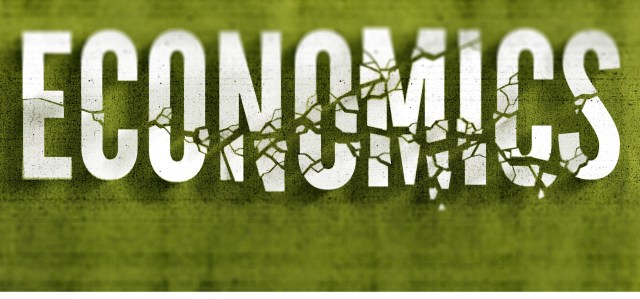Graphic by Krieg Barrie

Last week I wrote about the new normal of ultra-low interest rates – as favoured by central banks across the western world. In particular, I asked how they’d got away with such a loose (one might say louche) monetary policy for so long.
Before the financial crash, excessively low interest rates, quantitive easing and the like would be punished with inflation. In the earlier part of this decade, the op-ed pages were full of rightwing economic pundits saying this would happen sure as clockwork (if we didn’t mend our ways in time). Yet, like their leftwing brethren (who warned that austerity would cause mass unemployment), they were proved wrong.
The post hoc rationalisation was that the financial crisis was much worse than previously realised – and that the shock of such a deep recession must have suppressed demand. This excuse is wearing thin. We’re now ten years on from the start of the crisis – and several years into the recovery (the precise number depending on location). So where’s that inflation then?
It’s a mystery that Nouriel Roubini tries to fathom in a piece for Project Syndicate:
“Since the summer of 2016, the global economy has been in a period of moderate expansion, with the growth rate accelerating gradually. What has not picked up, at least in the advanced economies, is inflation. The question is why.”
If we can’t blame lack of demand, then we ought to look on the supply-side of the economy:
“One possible explanation for the mysterious combination of stronger growth and low inflation is that, in addition to stronger aggregate demand, developed economies have been experiencing positive supply shocks.”
A ‘positive supply shock’ is basically a glut – an expected surge in production sufficient to soak up demand at the same (or lower) prices.
Roubini lists a number of examples, all of which are happening to the global economy right now:
“Such shocks may come in many forms. Globalization keeps cheap goods and services flowing from China and other emerging markets. Weaker unions and workers’ reduced bargaining power have flattened out the Phillips curve, with low structural unemployment producing little wage inflation. Oil and commodity prices are low or declining. And technological innovations, starting with a new Internet revolution, are reducing the costs of goods and services.
The conventional wisdom is that it won’t last. But, in this context, the conventional wisdom is circular – it assumes whatever it takes to stop conventional economic theory from blowing up. Roubini (who defied convention when he was one of the very few economists to predict the financial crisis) argues that we should be open to the possibility that the positive supply shocks are permanent (or at least persistent).
He is not alone:
“…the Bank for International Settlements…argues that it is time to lower the inflation target from 2% to 0% – the rate that can now be expected, given permanent supply shocks. Trying to achieve 2% inflation in a context of such shocks, the BIS warns, would lead to excessively easy monetary policies, which would put upward pressure on prices of risk assets, and, ultimately, inflate dangerous bubbles.”
Perhaps we should go even further and consider a truly radical possibility – which is that the long prophesied age of abundance is beginning to manifest itself.
The most fundamental assumption in conventional economic theory is scarcity. Indeed, the whole of economics is basically devoted to answering one question: how should we allocate scarce resources?
The concept of post-scarcity economics has been explored by science fiction writers, but policy makers need to catch-up. Though obviously not happening universally, there are more and more examples of once scarce resources that are now super-abundant in particular places and at particular times. Examples include information and entertainment (thanks to the internet); food (people in the developed world have access to far more calories than they can sensibly consume); energy (at times of peak production from renewables, the wholesale price of electricity in some markets has dropped to zero); and even money itself (i.e. when money is loaned at close to zero interest).
With further technological progress (especially in robotics and artificial intelligence) we can expect the once distant prospect of post-scarcity to breakthrough into more and more of our present reality.
I’d like to reiterate that this process, though underway, is clearly incomplete and extremely uneven. As a result it is helping to drive all kinds of distortions – like inequality, asset bubbles and, in some countries, the threat of deflation.
Above all, it is overturning old assumptions, which now provide a dangerously misleading guide for policy makers.
To save capitalism – or at least the practice of liberty in the economic sphere – we must remake our theoretical frameworks.










Join the discussion
Join like minded readers that support our journalism by becoming a paid subscriber
To join the discussion in the comments, become a paid subscriber.
Join like minded readers that support our journalism, read unlimited articles and enjoy other subscriber-only benefits.
Subscribe